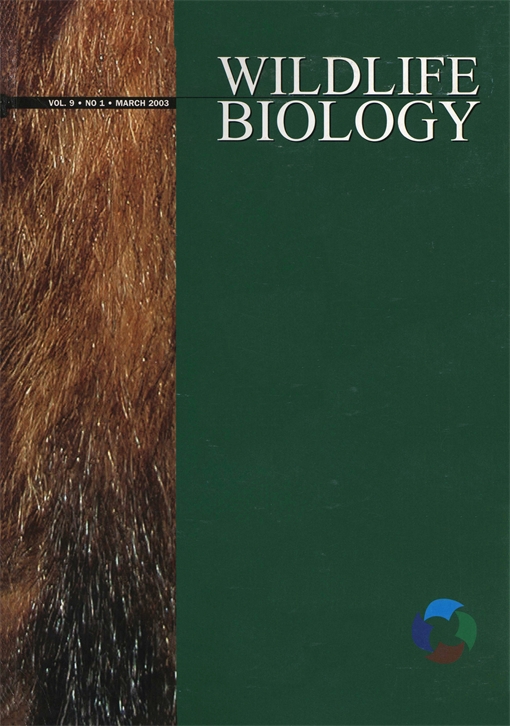By use of radio-tracking, we studied hazel grouse Bonasa bonasia in the southeastern French Alps from 1998 to 2002. The Kaplan-Meier annual survival rate of adult males (N = 41) was 0.72 (95% C.I.: 0.59 - 0.85), and 0.60 for adult females (N = 15; 95% C.I.: 0.40 - 0.91). For juveniles (sexes combined; N = 29) the survival over nine months (15 September-15 June) was 0.74 (95% C.I.: 0.58–0.90). The seasonal pattern of survival was different for the two sexes. Adult male survival during November-April (S = 0.76; N = 38) was lower than during May-October (S = 0.95; N = 41). Only three of 16 male deaths (ages combined) occurred in summer. Female survival (ages combined) during November-April (S = 0.90; N = 16) was higher than during May-October (S = 0.70; N = 16). Five of six females died between May and July, i.e. during egg laying, incubation or brood rearing. Raptors, red foxes Vulpes vulpes or pine martens Martes martes accounted for most mortality of adults. The estimated annual survival rates were high compared to those reported for more northern populations, and the difference may be due to an extensive, dense and well-structured habitat that reduces the ability of raptors to kill hazel grouse. The high survival rates may explain the range expansion currently occurring in the southeastern French Alps.
How to translate text using browser tools
1 December 2003
Survival in an expanding hazel grouse Bonasa bonasia population in the southeastern French Alps
Marc Montadert,
Patrick Leonard

Wildlife Biology
Vol. 9 • No. 4
2003
Vol. 9 • No. 4
2003
Bonasa bonasia
causes of mortality
hazel grouse
radio-tracking
range expansion
survival




